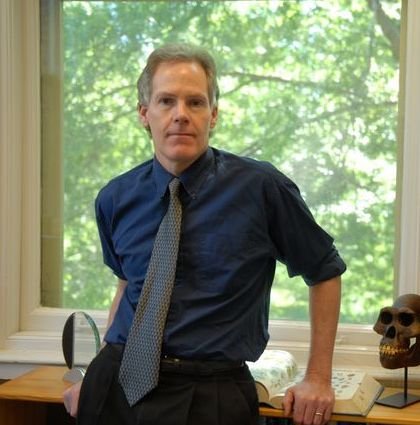Howard Gardner © 2024
When I developed the theory of multiple intelligences over forty years ago, I garnered “data” from several disciplines: psychology, neuroscience, genetics, anthropology, and—though it was not emphasized—my own observations and reflections as a presumably educated person in modern society. The assertion that Homo sapiens could be described as a species that has a number of relatively distinct—I dubbed them “semi-autonomous”—capacities caught attention. I would now comment that the theory was accepted too uncritically by many educators, while it was rejected out of hand by too many psychologists (as well as some scholars from neighboring disciplines), who neither bothered to read what I had claimed nor to engage the “data” that I had culled.
The “theory of multiple intelligences” was clearly—if not self-consciously—a work of synthesis. I continue to be fascinated by the human capacity to synthesize large amounts of information and to present the resulting collation or amalgam in a comprehensible format. (See my blog dedicated to the topic).
That said, I did not consider two possibly informative perspectives. On one hand, while I wrote about informal, so-called “bush schools”—prevalent in earlier epochs—I focused primarily on education as it is practiced in modern times. Indeed, most of my successive writings about “MI” have assumed and addressed modern schools located primarily in what’s been termed the “global north.” On the other hand, while certainly aware of biological and cultural evolution, I was writing about human beings in the last few millennia—I did not consider the evolution of Homo sapiens, nor earlier instantiations of the hominin branch.
David Geary
Though familiar with his significant research on the development of mathematical knowledge and skills in young people, I did not know about a notable interest of psychologist David Geary. In a 2005 book of 450 pages, Geary surveyed The Origin of Mind: Evolution of Brain, Cognition, and General Intelligence. And then, in a shorter Cambridge Elements book (2024), Geary probed The Evolved Mind and Modern Education: Status of Evolutionary Educational Psychology.
In no way can I summarize the argument, findings, and claims of these two estimable writings, which are well worth study for those with the time and the interest. Here, I focus on how Geary’s work—and the hundreds of publications on which he draws—has affected my own thinking about “MI theory.”
If one were to have observed our hominin predecessors say, ten thousand years ago, one would presumably have observed manifestations of all of my stipulated intelligences. These hominins spoke and understood (linguistic); they could estimate numbers and exchange quantities (mathematical); they could indicate when an utterance made sense and when it was nonsensical or contradictory—including, presumably, jokes (logical); they could sing, appreciate music, and play on simple instruments (musical); they could walk, run, dance, climb, and play rough-and-tumble games (bodily-kinesthetic); they could distinguish species from one another (naturalist); they could figure out when other hominins liked them, disliked them, were trying to fool or trap them (interpersonal); and, at least to an extent, they knew what had happened to themselves (as opposed to other conspecifics including their own family members, how they felt about such events, and what they aspired to (intrapersonal).
For me, Geary’s work opens up a new vista: What does it take for members of our species to navigate in our modern schools, with their curricula and their mode of operations—a world where one is expected to read, to write, to carry out arithmetical and geometric computation, to sing from a score or produce a simple notation, to identify the logical flaws in an argument, to recognize, name, and classify a wide variety of plants and animals—as well as vehicles and commercial items—to be aware of the wide variety of human temperaments and motivations, deal with individuals who display unexpected combinations of these traits, and finally, to reflect on one’s own aspirations, defenses, gains and losses in the past, and one’s own future life course—especially apart from religious precepts and dictates which might deny one’s own individuality and/or that of other members of our species.
To pose these questions is to lay out an entirely different perspective on multiple intelligences. Instead of being solely synchronic (What do human intelligences look like in a modern schooled world?), we adopt a lens that is diachronic (How did our species evolve from the set of abilities and expectations of the parched regions of Africa, tens of thousands of years ago, to those needed in the two hundred or so countries today, most of them heavily reliant on formal education—at least for the first decade of life—and increasingly, continuing to a later age and to a higher degree?)
A number of possibilities emerge:
l. The human brain-and-body have been largely unchanged. Over time, groups of humans invented more complex operations, and our ancestors were gradually able to master them;
2. The brain-body has evolved, or selected for, certain traits that enabled the invention and implementation of notational systems and scholarly disciplines—and branches unable to handle them (e.g. Neanderthals) disappeared;
Aristotle
3. Certain exceedingly rare individuals (e.g. Aristotle, Newton) with atypical genes, or combinations of genes—and/or with rare talents and combinations of talents—took the lead in inventing notations and disciplines. Once invented, these new symbols—and systems of symbols—gradually took hold even with less exceptional persons;
Plato
4. More formal ways of transmitting knowledge were created either gradually or by the rare genius (e.g. Confucius, Moses, Plato). These, in turn, led to the creation of institutions where those forms of knowing could be efficiently transmitted, mastered to some extent by most students—and built upon by the most able students.
No doubt, the actual story is far more complex than suggested here, or than can even be imagined. By his impressive syntheses, David Geary has opened up a whole world of study and inquiry which will hopefully lead both to new insights and to more effective and species-appropriate educational systems…ones that we will need as the Anthropocene continues to unfold.
For very helpful comments. I thank David Geary and Ellen Winner.
REFERENCES
Black, A., & Tylianakis, J. M. (2024). Teach Indigenous knowledge alongside science. Science (New York, N.Y.), 383(6683), 592–594. https://doi.org/10.1126/science.adi9606
Geary, D. C. (2005). The origin of mind: Evolution of brain, cognition, and general intelligence. American Psychological Association. https://doi.org/10.1037/10871-000
Geary, D. (2024). The evolved mind and modern education: Status of evolutionary educational psychology. Cambridge University Press.























